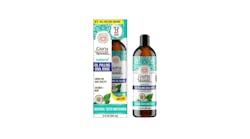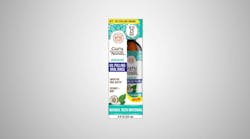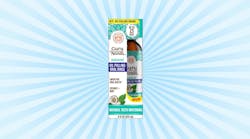Chairside Impact: Guiding patients to establish an effective oil pulling routine
Addressing oil pulling with patients is becoming increasingly common. As dental hygienists, it’s crucial that we take the lead in discussing oral hygiene, ensuring accurate information prevails over the abundance of advice found on social media. After all, dental hygienists are the ultimate oral hygiene influencers.
When searching for information on oil pulling, the methods and products available can be overwhelming. My aim is to equip hygienists with the knowledge necessary to engage in informed discussions with patients.
I strongly advocate for GuruNanda products as reliable options for oil-pulling regimens. Regardless of personal opinions on alternative oral hygiene methods, it’s essential for clinicians to meet patients at their current stage of oral health and provide guidance accordingly. Educating ourselves on such techniques fosters trust and enhances patient-provider relationships.
Step 1: Oil pulling in the morning
Among the various methods, Kavala Graha from Ayurvedic Medicine stands out as a practical choice. This involves swishing a tablespoon of oil in the mouth for 3 to 20 minutes. Given its user-friendly nature, we’ll focus on this method, which many people have adopted.
I personally prefer GuruNanda’s oil-pulling products because they utilize medium chain triglycerides often derived from coconut oil, also known as fractionated coconut oil, which remains in liquid form regardless of temperature. This ensures convenience and ease during the oil-pulling process. Additionally, it’s worth noting that using fractionated coconut oil can be less strenuous on the TMJ muscles. Traditional coconut oil’s temperature-dependent solid or liquid state may pose challenges, whereas fractionated offers a consistently smooth experience for users. After dispensing the oil, start with a two-minute swish, gradually increasing to 10 minutes. Remember to spit the oil into a trash bin rather than the sink.
Step 2: Brush
An important aspect of oil pulling is saponification, where fatty acids combine with alkaline substances to form a soaplike material that could potentially aid in cleansing debris and other impurities from the oral cavity. However, it’s crucial to mechanically remove all biofilm with a toothbrush post-oil pulling, as mechanical disruption remains fundamental to oral hygiene.
Step 3: Flossing
While oil pulling aids in loosening biofilm, interproximal biofilm removal requires additional measures such as flossing or water flossing.
Step 4: Tongue scraping
To optimize oral health, it’s imperative to continue removing bacterial plaque from the oral mucosa. Tongue scraping has shown significant efficacy in reducing bacteria, surpassing the results of tongue brushing or scraping alone.
As we guide patients toward embracing oil pulling as part of their oral hygiene routine, it’s important to consider product quality. GuruNanda’s products are particularly beneficial. Fractionated coconut oil makes it highly convenient for our purposes, ensuring a seamless oil-pulling experience for patients seeking optimal oral hygiene.
Editor's note: This article appeared in the July 2024 print edition of RDH magazine. Dental hygienists in North America are eligible for a complimentary print subscription. Sign up here.









